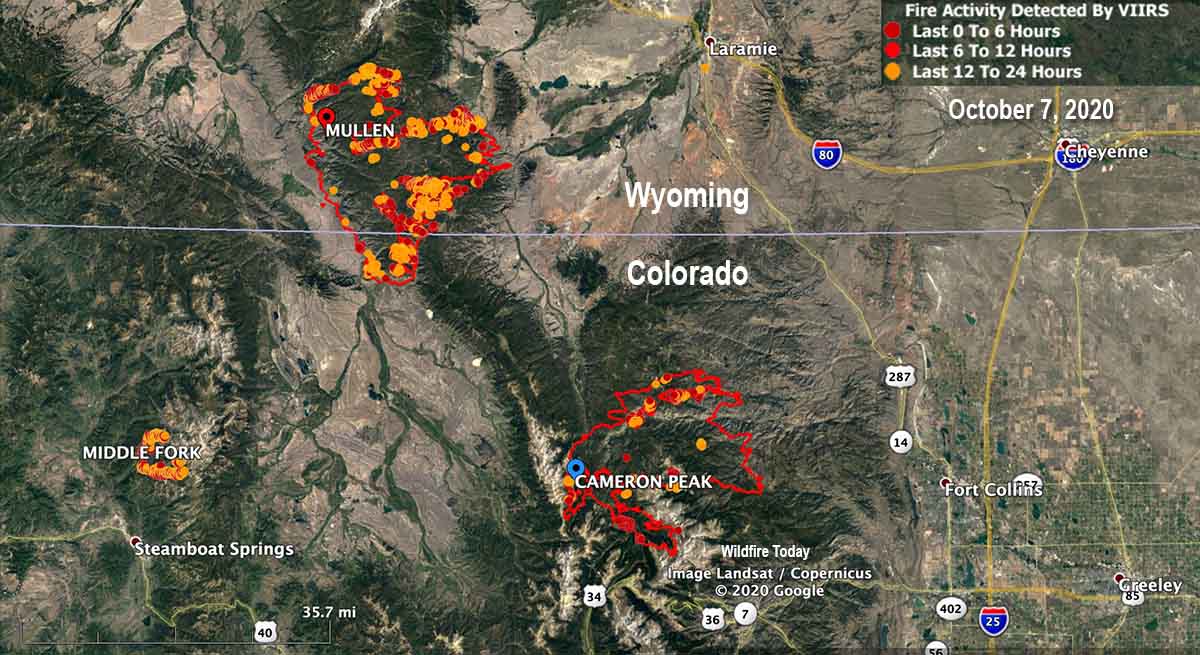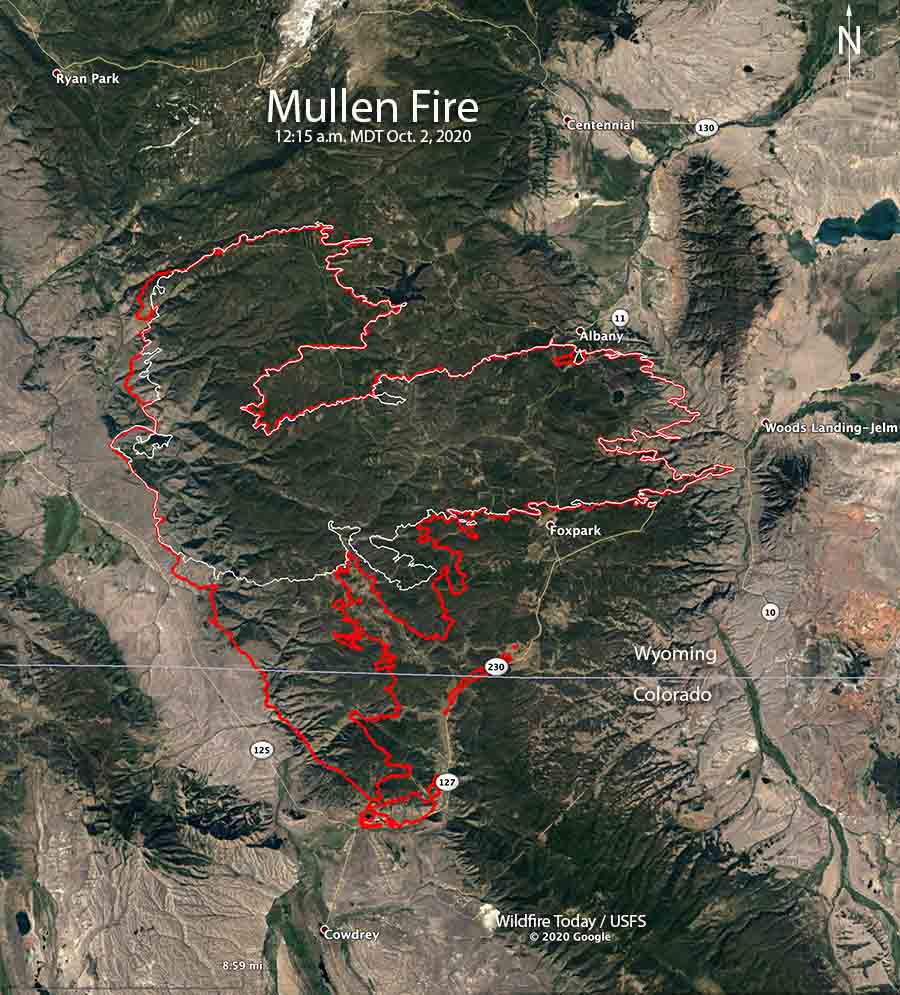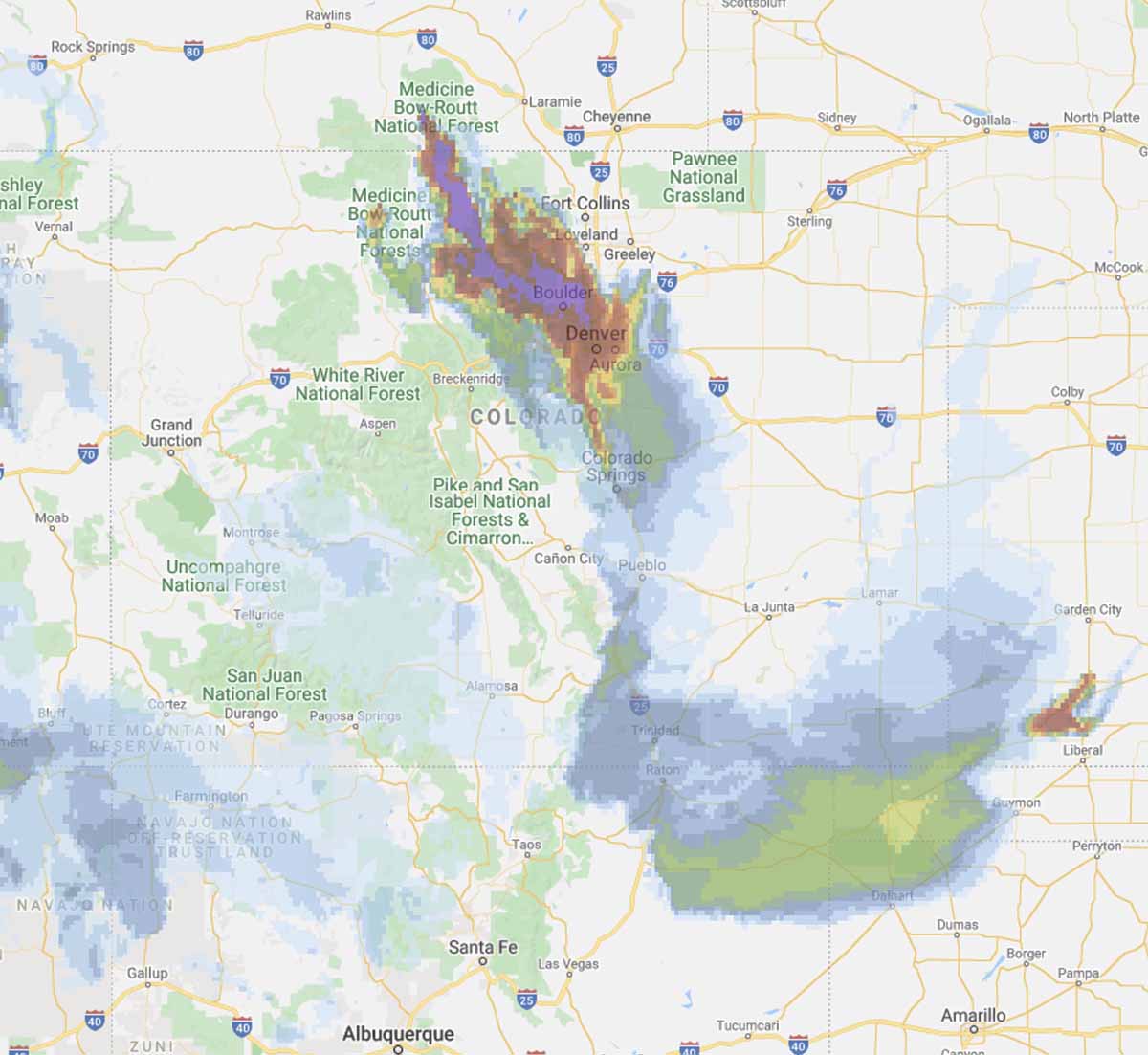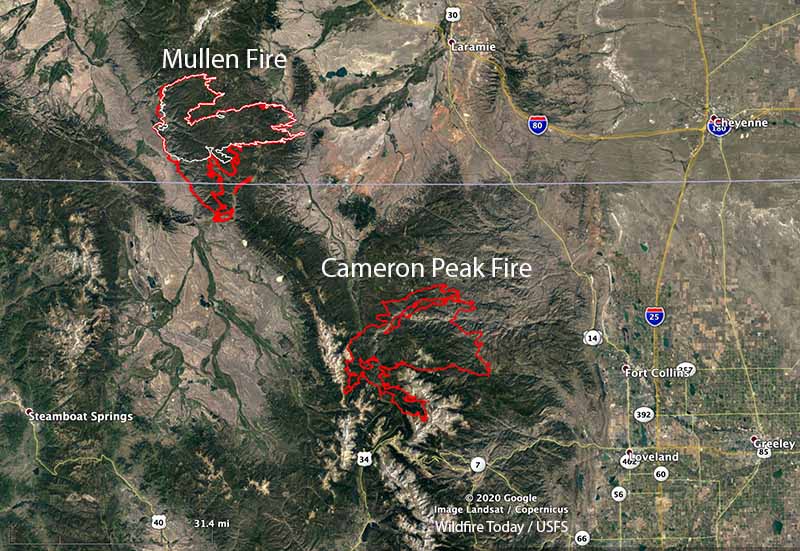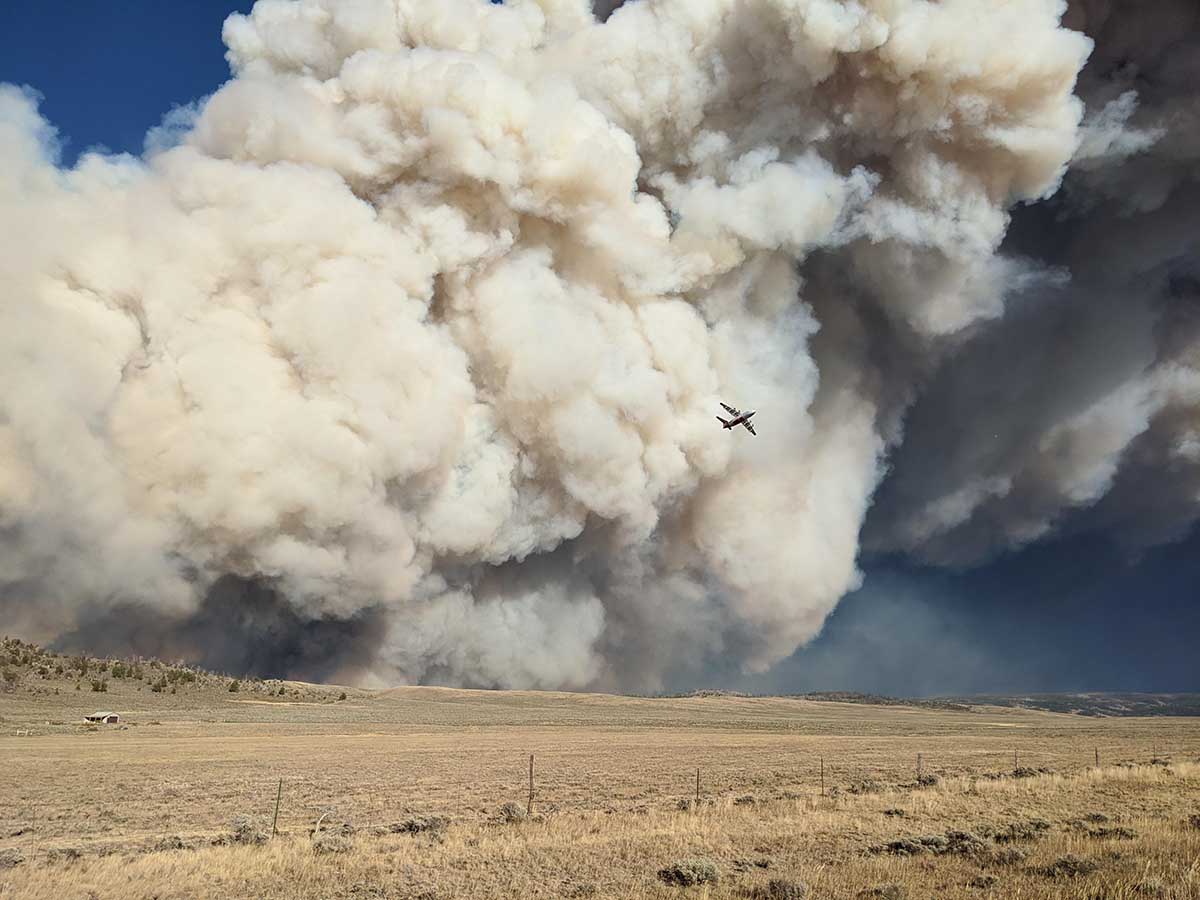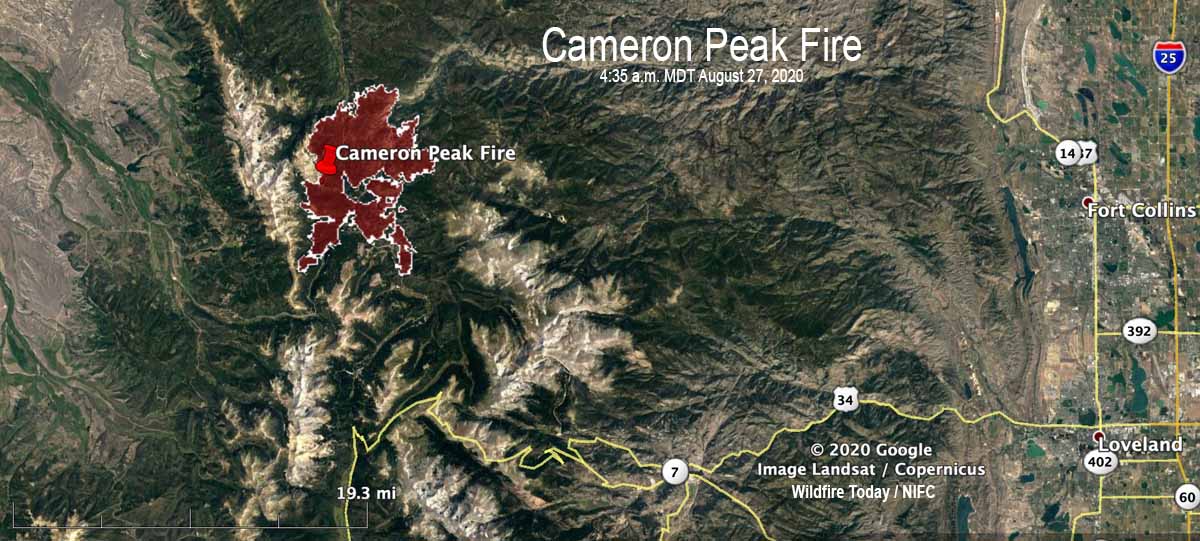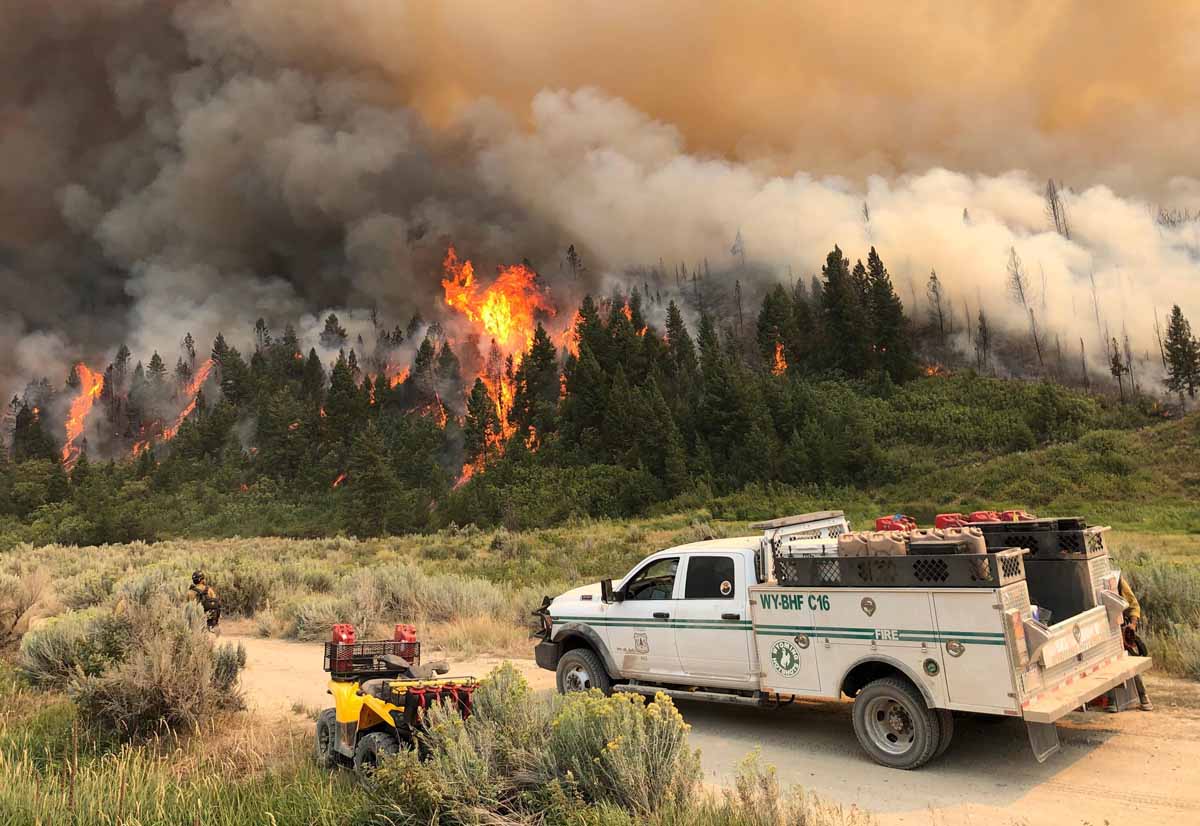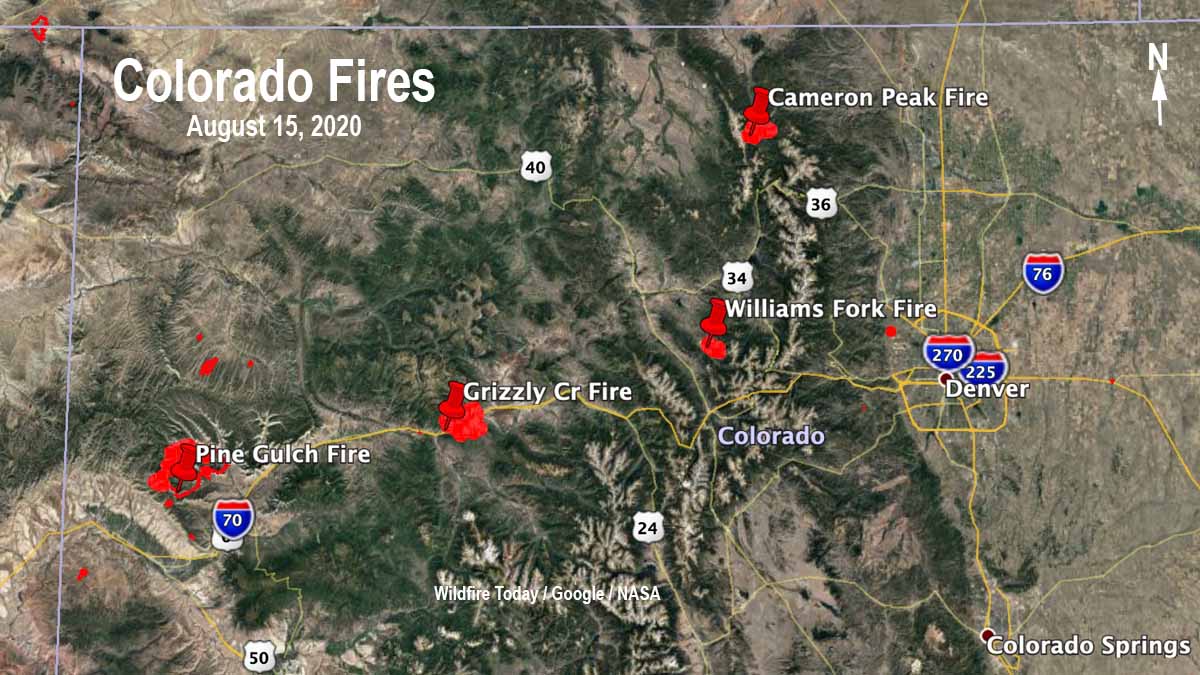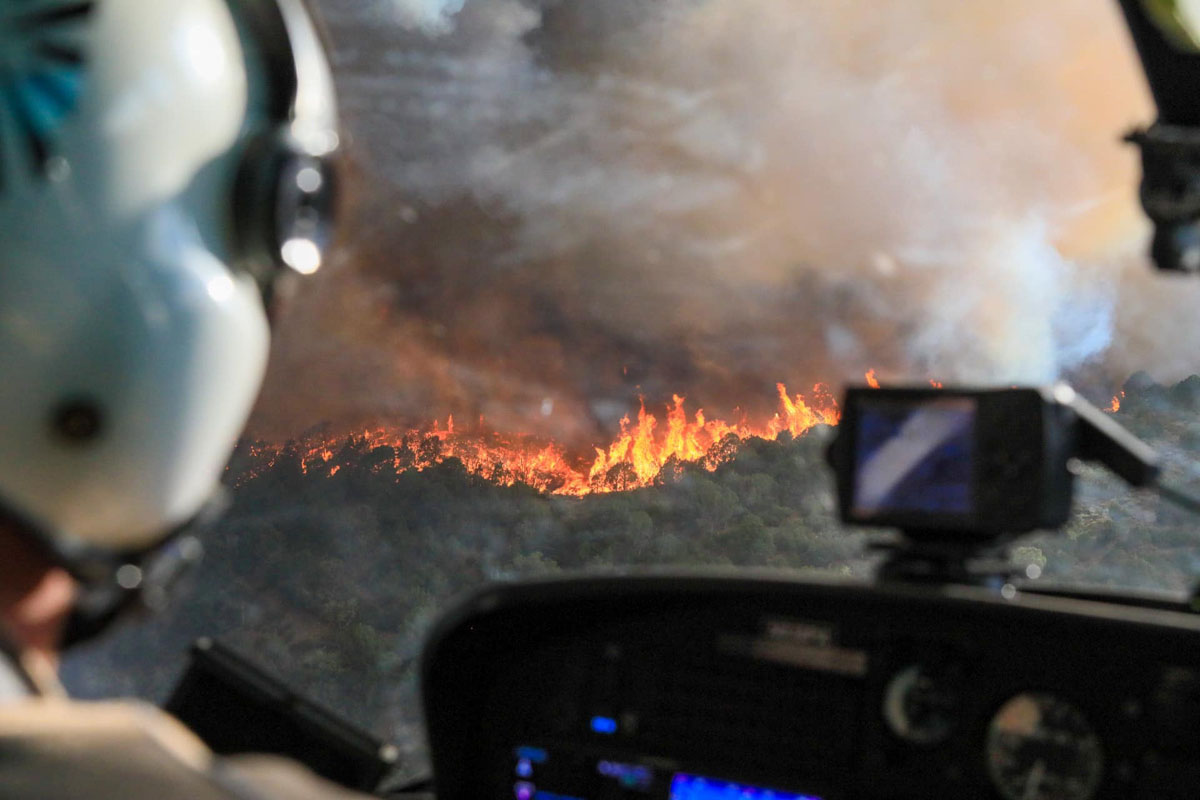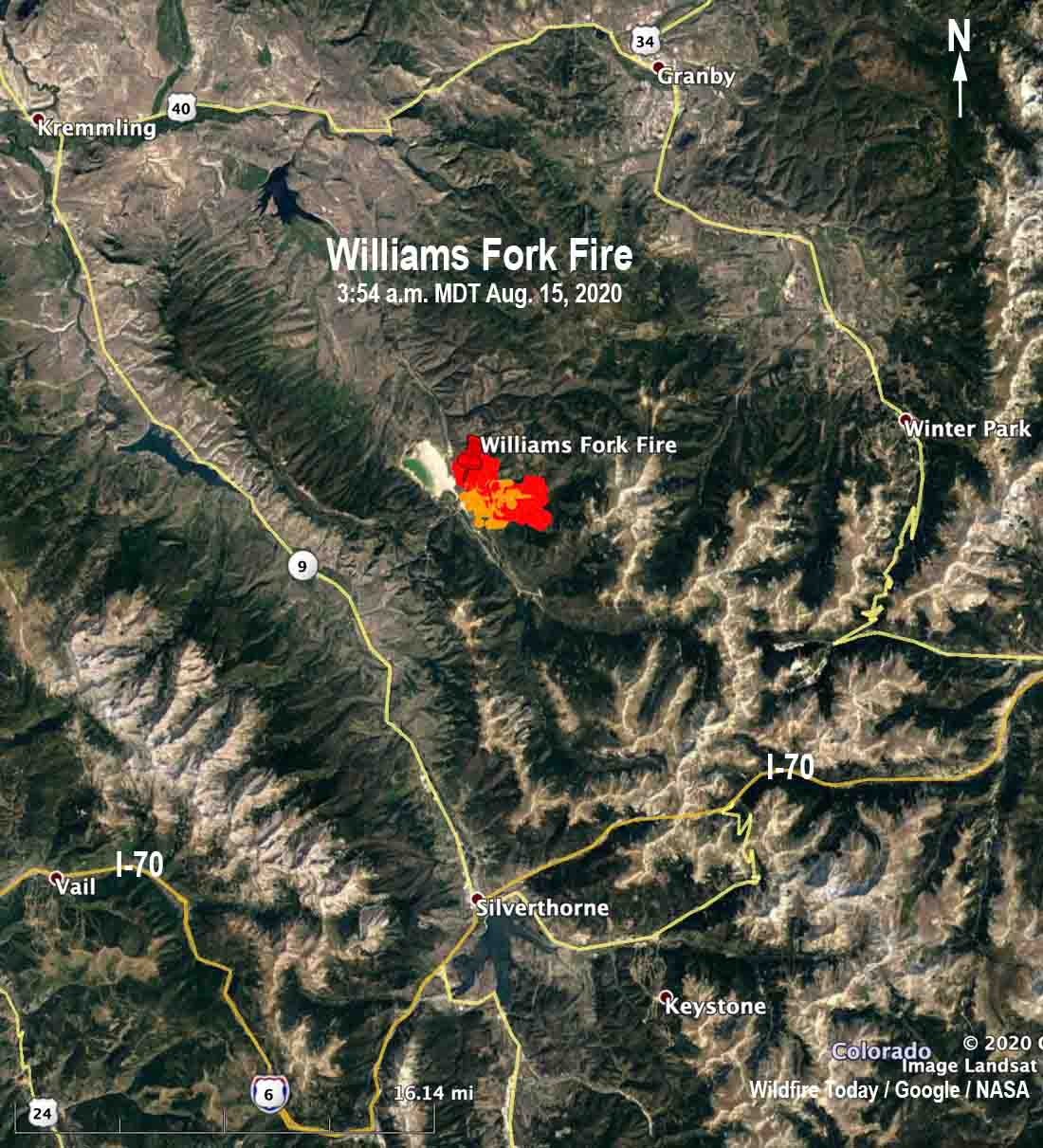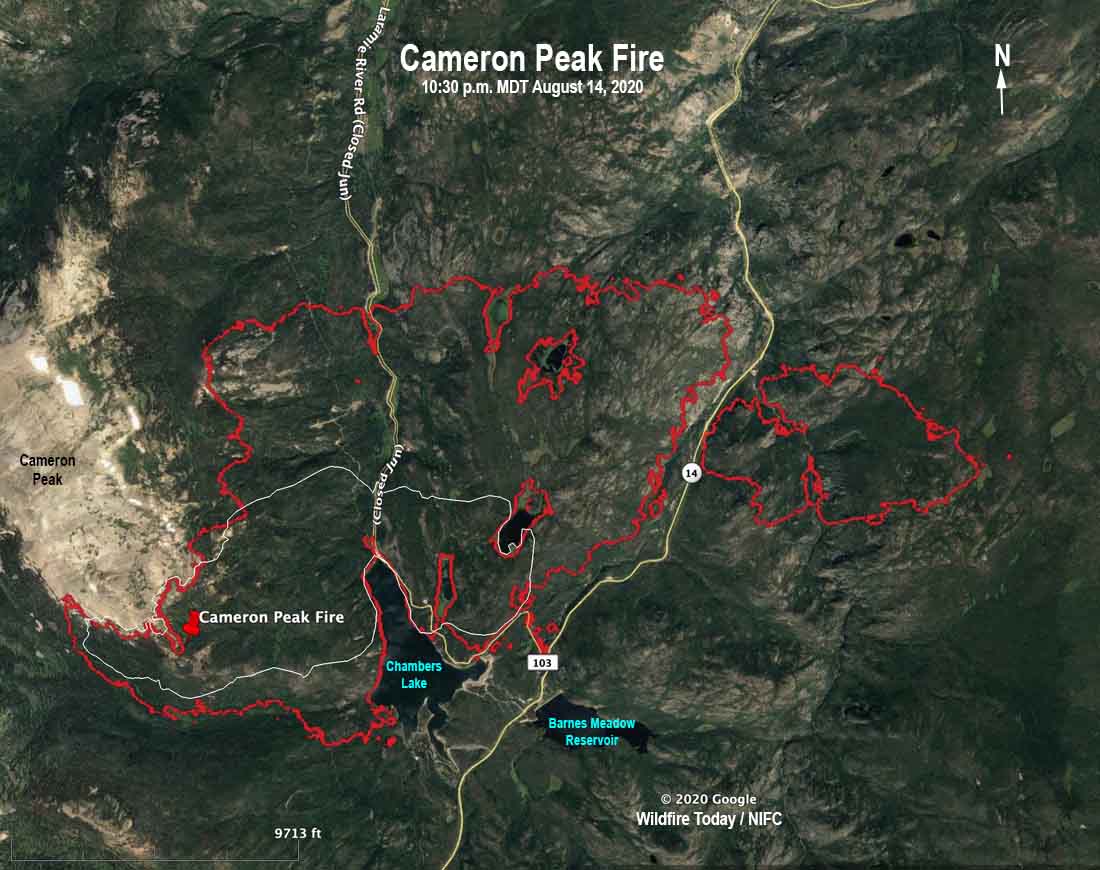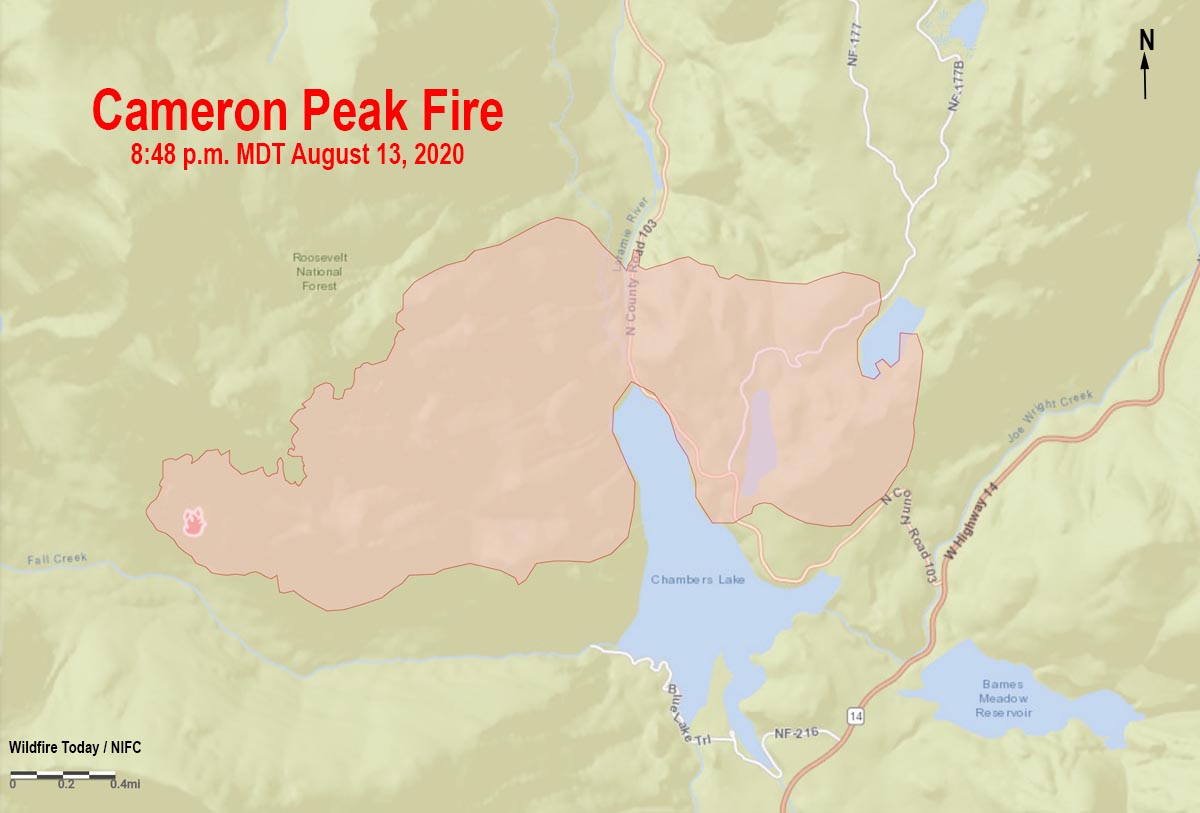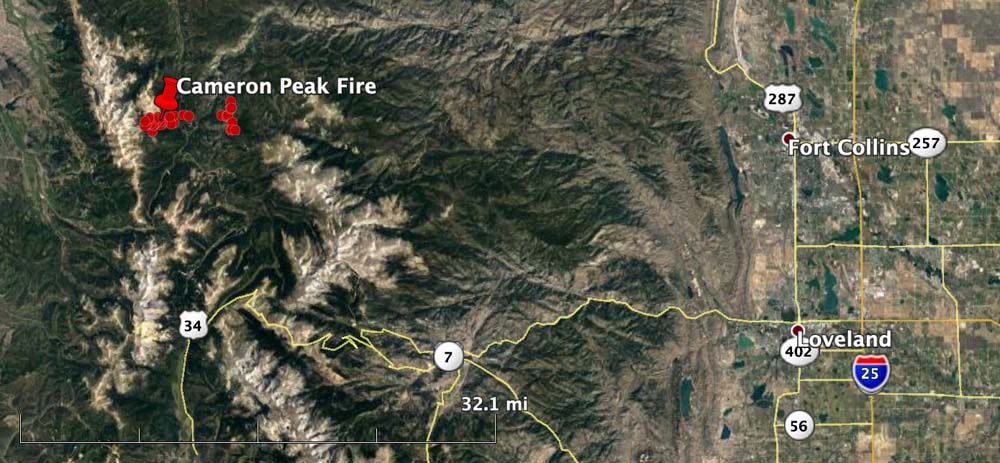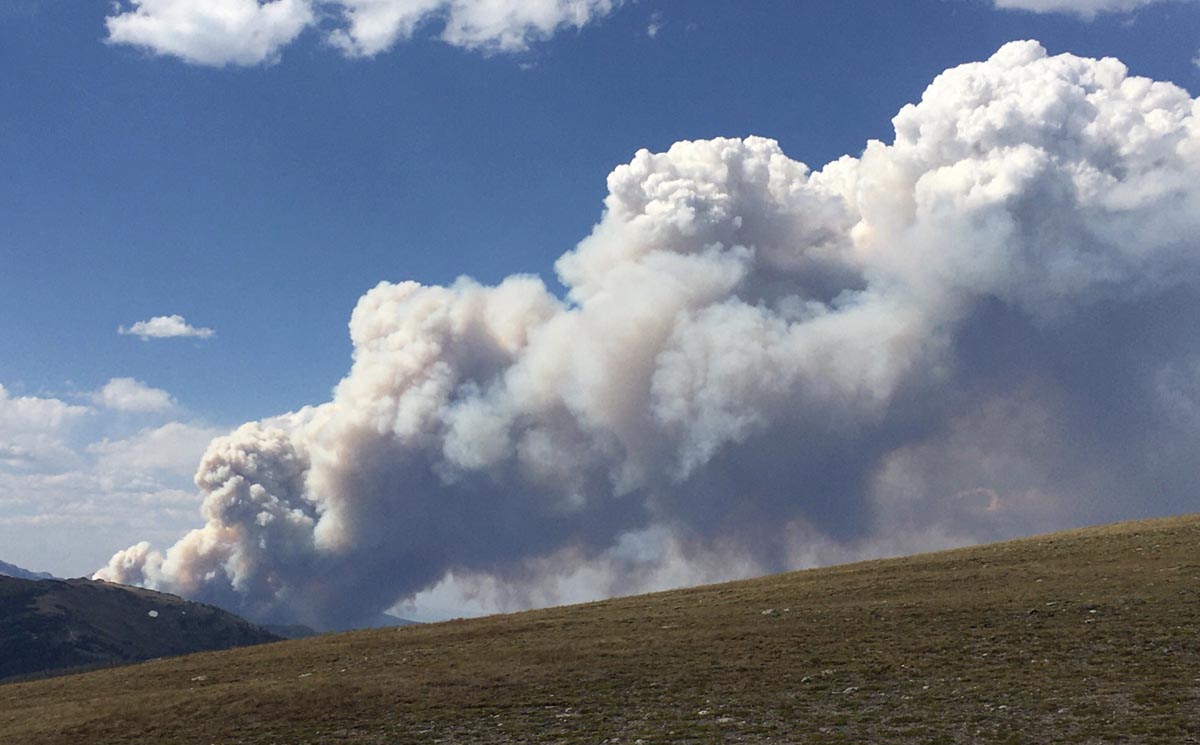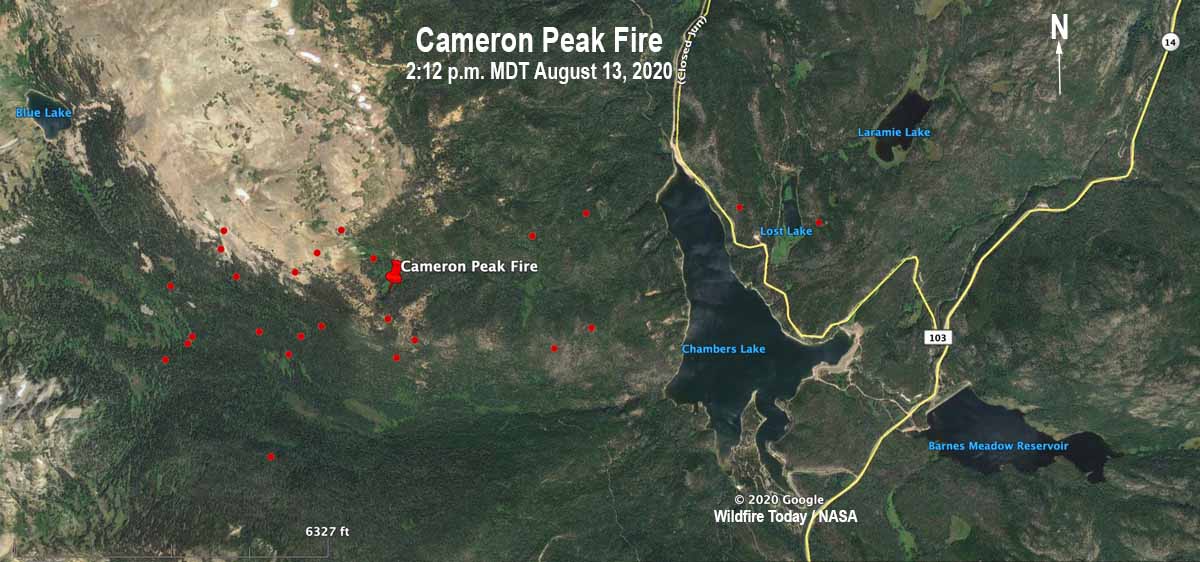Updated October 8, 2020 | 7:53 a.m. MDT
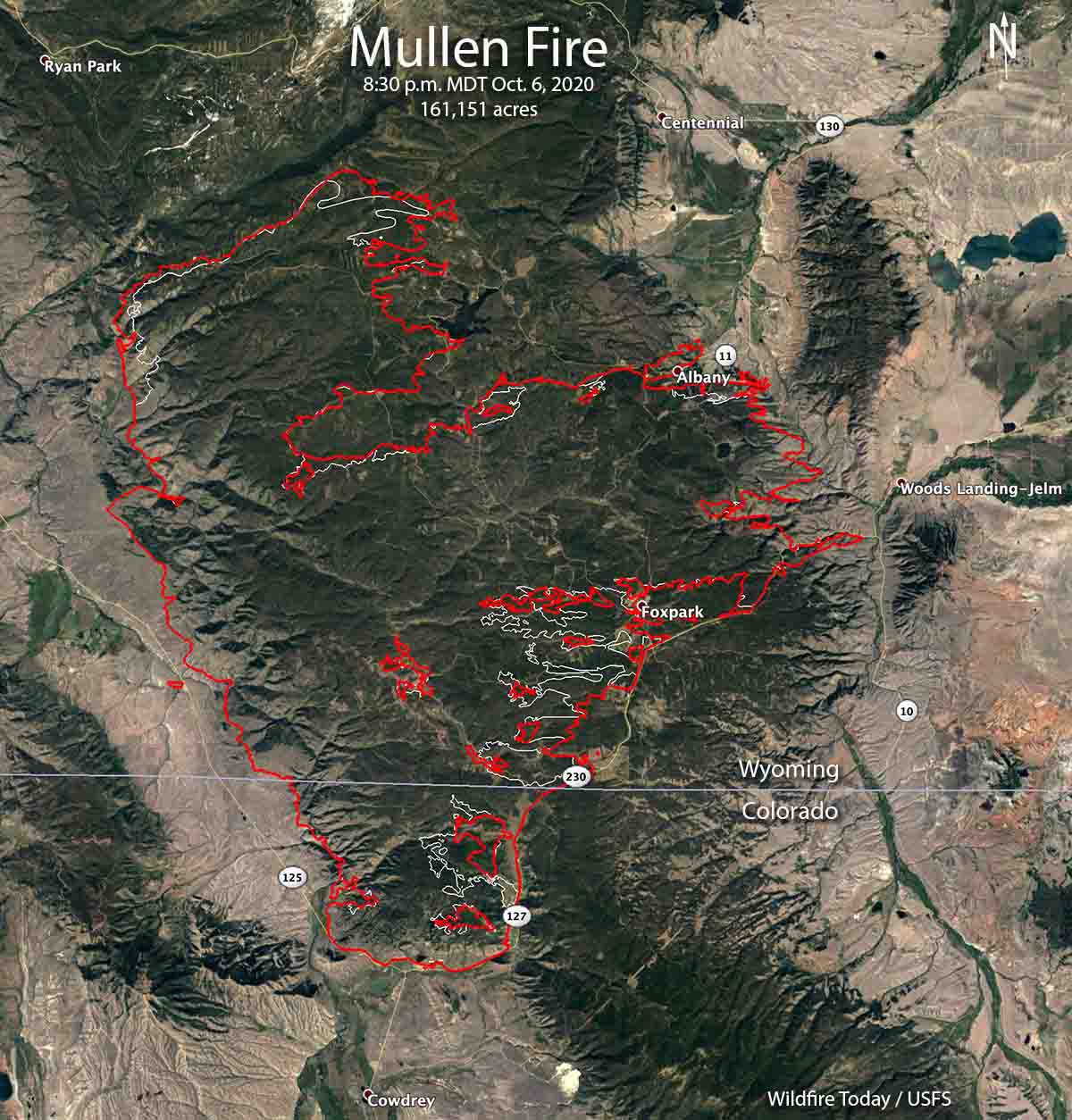
The Mullen Fire has been active on the east and northeast sides and reached the small community of Albany, Wyoming on Highway 11. The fire grew to the east and is now on both sides of the highway. Firefighters have been working to protect structures in Albany, the Wyoming Infrared Observatory, and the Rob Roy reservoir which is the main water source for the city of Cheyenne, WY.
The incident management team reported October 7 that 32 residences and 33 other structures have been destroyed.
Albany County crews established and strengthened indirect fire lines to slow the potential spread towards Centennial which is six miles north of the fire.
The Mullen Fire has burned 170,996 acres, according to the Incident Management Team Thursday morning. The weather forecast through Saturday could be troublesome for firefighters — breezy conditions and low relative humidity. The wind will be generally out of the west or southwest at 8 to 14 mph with the humidity in the teens. There is a slight chance of a small amount of rain Sunday but that will come with 20 mph winds gusting out of the west at 29 mph.
The resources assigned include 14 hand crews, 116 engines, and 16 helicopters, for a total of 1,079 personnel.
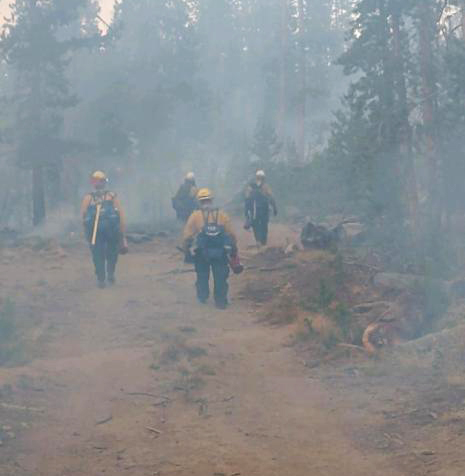
The Cameron Peak Fire has been much less active than the Mullen Fire, and has been mapped at 129,055 acres. The incident management team reported October 7 that 27 residences and 30 other structures have been destroyed.
The 11,005-acre Middle Fork Fire 7 miles north of Steamboat Springs, Colorado was very active Tuesday and Wednesday on the south, west, and north sides. As of Wednesday evening the resources assigned, according to the national situation report, included no hand crews or engines, and 4 helicopters, for a total of 70 personnel. Two structures are threatened.
